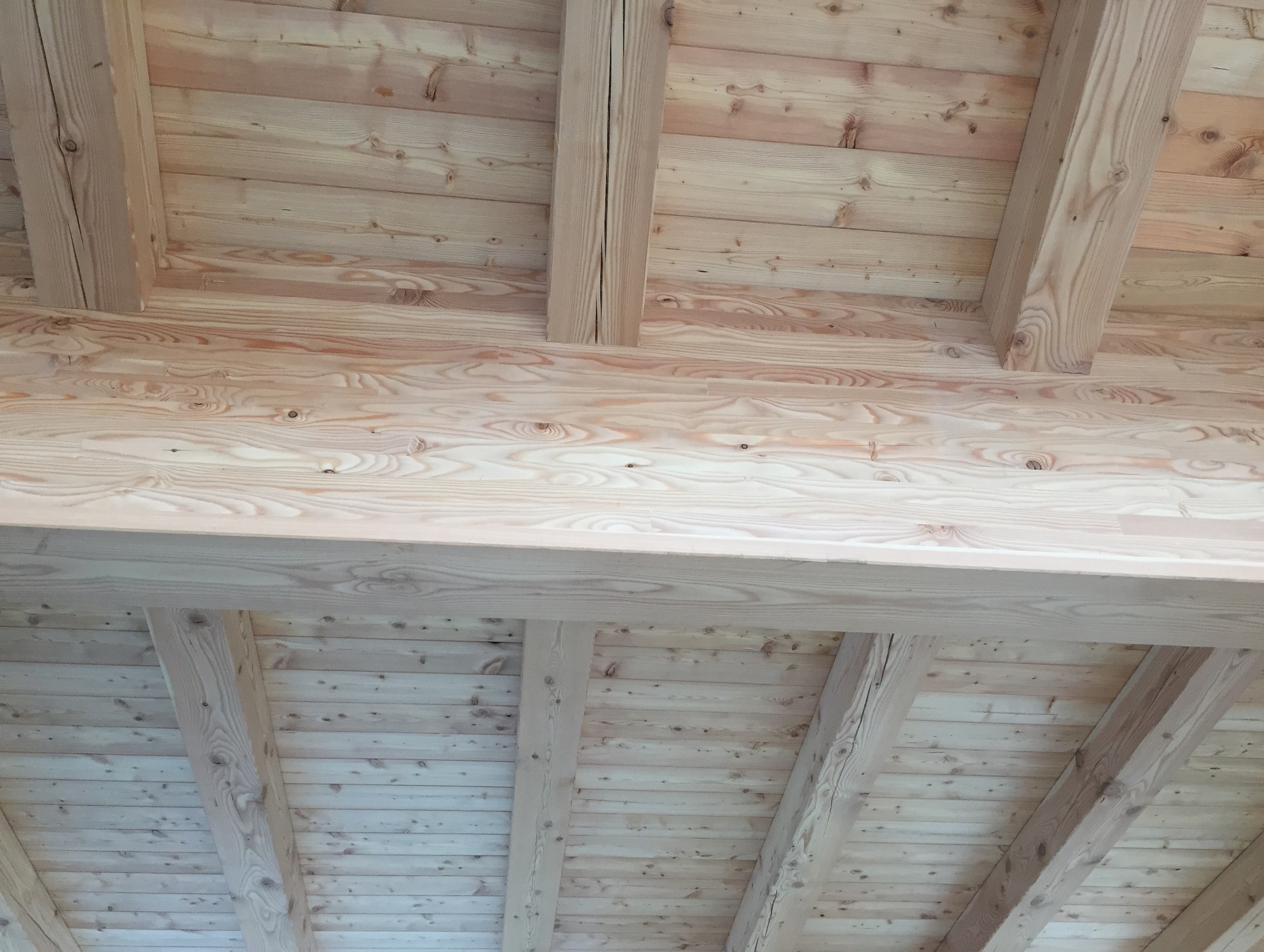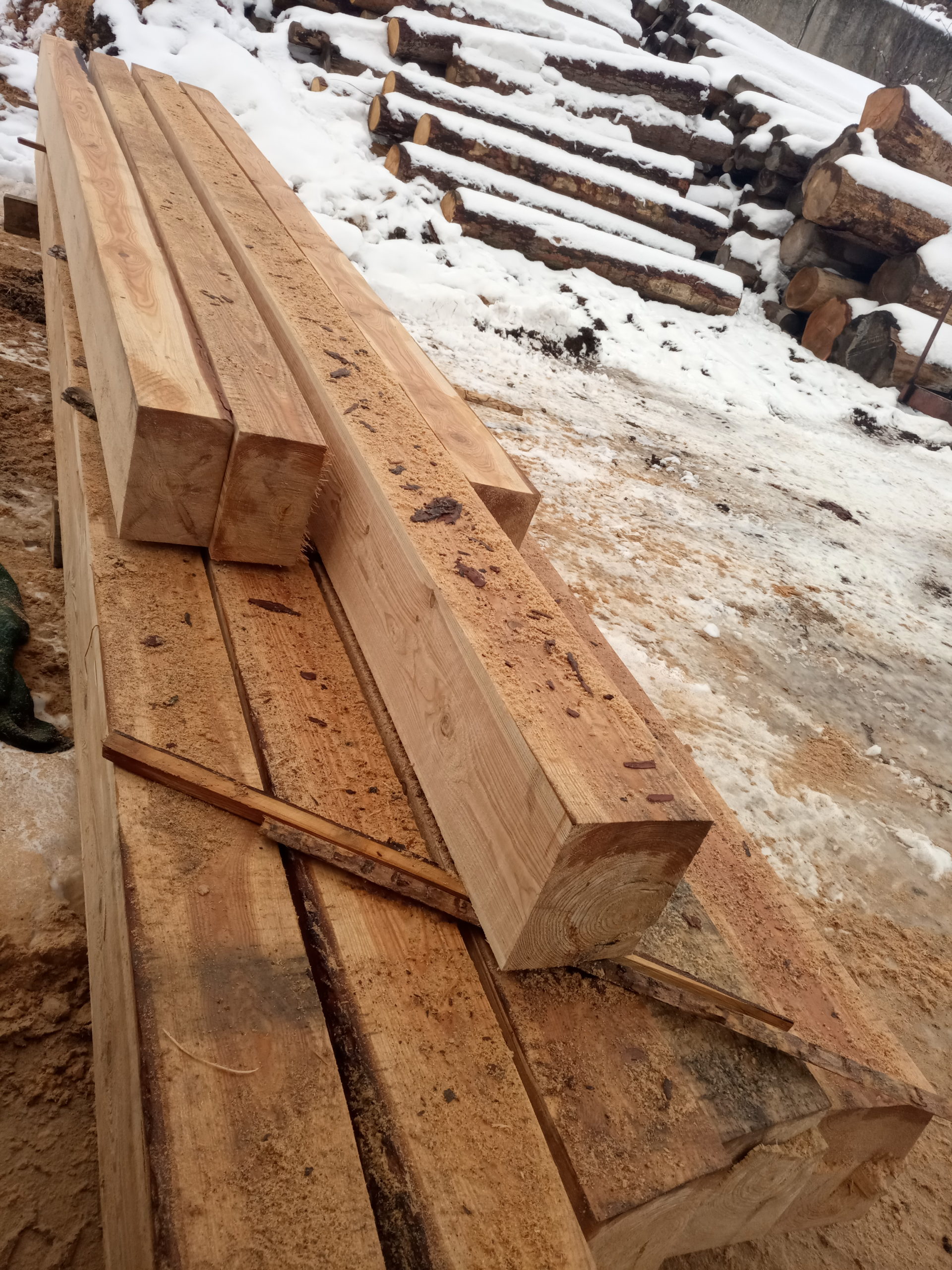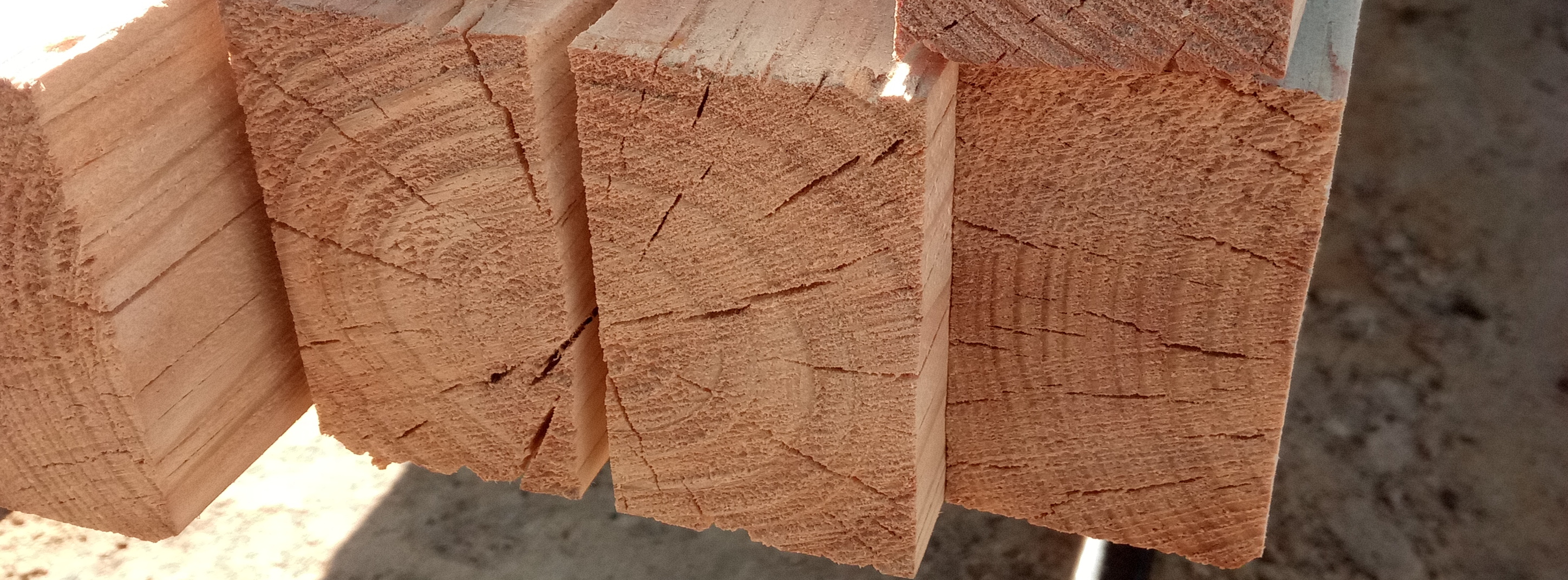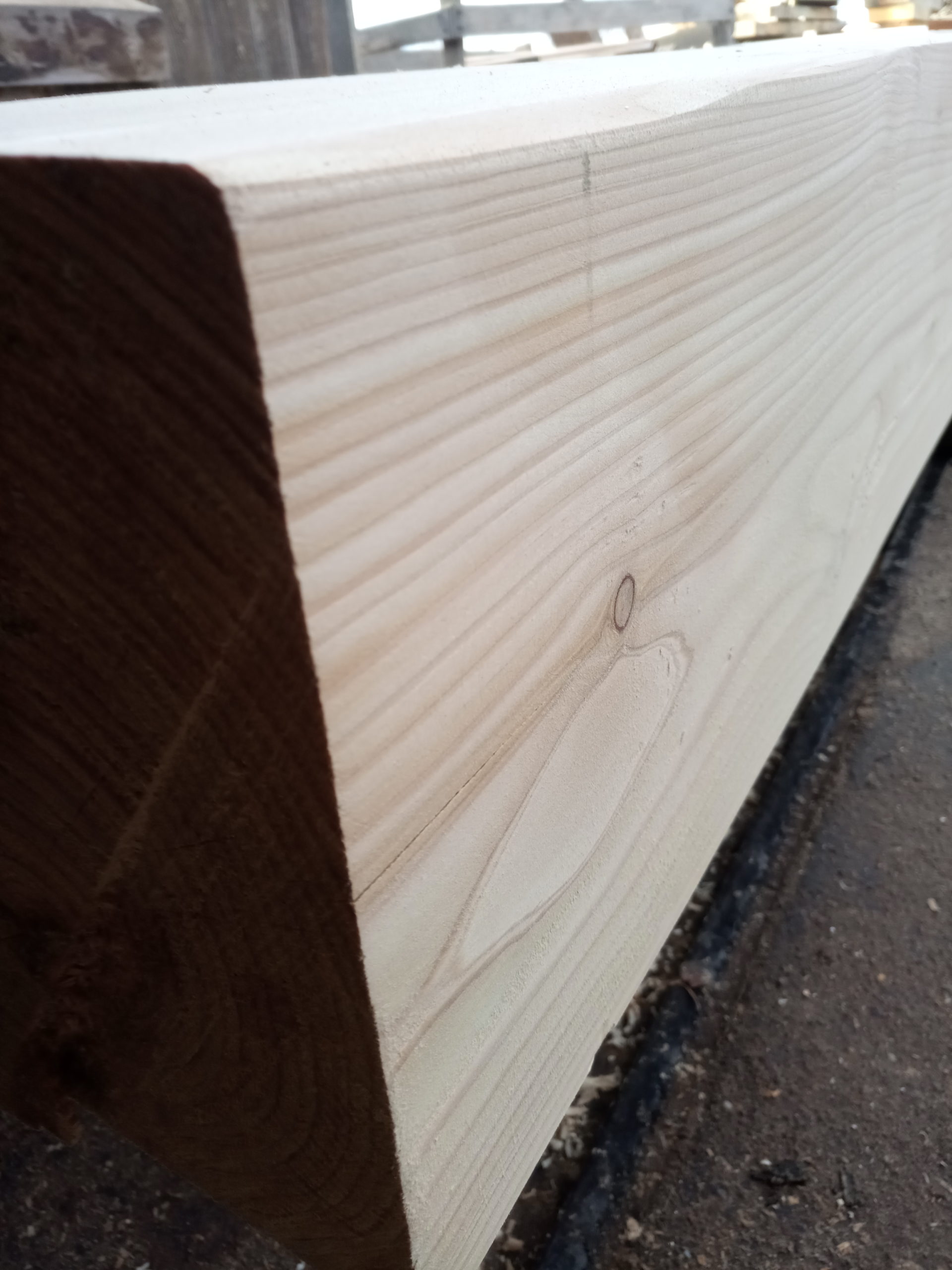We will produce, dry, plane, sand and grind the material for larch bridges, bridges, footbridges and other water structures. Of course, the lumber comes with a certificate for larch construction lumber.

WHAT MATERIAL FOR LARCH BRIDGES, BRIDGES, FOOTBRIDGES CAN WE MAKE?
Freshly sawn (tarred) larch timber with unspecified moisture content
The disadvantage of using untreated lumber can be the high water content and the subsequent volume changes and deformations when drying to equilibrium moisture content. The higher water content may also be problematic in terms of increased risk of attack by wood-boring insects, molds and fungi, but this is to a small extent in oak, as larch is resistant to such attack.
When buying raw timber, it is a good idea to choose the right quality for the application. In general, centre sawn timber, ideally radial with no pith content, will be the strongest and most stable.
On the other hand, incorporating elements made from uncured timber with pulp content may cause undesirable effects in the form of twisting, drying cracks, etc.
This product of basic sawmill processing is not losing its popularity in traditional carpentry constructions where a relatively wide range of cross-sectional dimensions are used – exterior constructions, larch planks in the garden, raised beds, etc.


Technically dried, planed material for larch bridges, bridges, footbridges
The profiles are made of technically dried larch lumber with guaranteed moisture content (exterior usually 15% ±3%, interior 10% ±2%). The centre lumber, ideally radial without pith content, will be the strongest and most stable and care is taken to cut the pith (centre of the log) during the primary cutting of the log. This ensures greater dimensional stability.
Four-sided planing or sanding and bevelled edges are a matter of course for self-dried planks, battens, planks or beams.
For the production of larch lumber, logs are used in the order of the first and second pieces from the bottom of the tree, with fewer cut branches (knots) and minimal curvature.
We will be happy to advise you on the selection of suitable material…




WHY IS LARCH WOOD USED FOR BRIDGES AND FOOTBRIDGES?
Larch wood is used for bridges and footbridges for several reasons related to its physical properties and environmental benefits.
Properties of larch wood
Strength and durability: Larch wood, especially Siberian larch, has a high strength comparable to oak. Its hardness reaches 109 according to the Brinell method, which makes it an ideal material for structures subjected to loads. The timber also has excellent compressive and elastic indicators, which ensures the stability and durability of structures.
Weather resistance: Larch is naturally resistant to rot and mold due to its resin content, which prolongs its outdoor life. This resistance is particularly important for outdoor structures such as bridges and footbridges, which are exposed to different weather conditions.
Ecological properties: wood is an environmentally friendly material that is easy to recycle and does not pollute the environment. Larch wood is also aesthetically pleasing, contributing to the natural appearance of buildings in the landscape.
Practical applications
Durability: larch wood is often used for the main load-bearing elements of bridges and footbridges. For example, glued laminated larch timber grade GL24h is chosen for pylons and trusses, while grown C24 larch timber can be used for other structural elements.
Due to its availability and lower cost compared to some other hardwoods (such as oak), larch is an economically viable choice for bridge and footbridge construction.
Larch is proving to be an ideal material for bridge and footbridge construction due to its combination of strength, weather resistance and environmental properties. These properties make it the preferred material for modern timber structures that need to meet both technical and aesthetic requirements.
HOW LONG DO LARCH BRIDGES AND FOOTBRIDGES LAST?
Larch bridges have the potential to last a very long time, often up to 300 years if they are built and maintained properly. According to civil engineering expert Roman Fojtík, timber bridges, including those made of larch, are more durable than concrete structures, which have an average lifespan of around 40 years.
Larch service life:
Larch, especially Siberian larch, is known for its high resistance to weathering and rot. This property makes larch an ideal material for bridges and other outdoor structures.
Proper maintenance and protection of the wood can significantly extend its life. For example, pressure impregnation of timber is recommended when the timber is in contact with soil or concrete, which increases its durability.
ADVANTAGES OF LARCH BRIDGES AND FOOTBRIDGES COMPARED TO CONCRETE BRIDGES?
Larch bridges, as timber structures, offer several significant advantages over traditional concrete bridges. These advantages include not only environmental aspects, but also technical and economic advantages.
Ecological advantages
Renewable resource: wood, including larch, is a renewable natural resource, which contributes to the sustainability of construction projects.
Carbon storage: Wood stores carbon, helping to reduce the concentration of CO2 in the atmosphere. One cubic metre of wood can store up to 920 kg of CO2.
Low energy consumption: the construction of timber bridges is less energy intensive than the construction of concrete structures, contributing to a smaller ecological footprint.
Technical advantages
Speed of construction: timber bridges are typically built faster than concrete alternatives, which can reduce project delivery times.
High static load capacity: timber has a high static load capacity and can be used effectively in a variety of structural applications.
Design flexibility: Timber bridges allow for greater variability in design and aesthetics, which can be attractive to architects and investors.
Economic advantages
Lower material costs: due to the availability of larch and the lower cost of wood processing, the cost of building timber bridges can be lower than concrete bridges.
Maintenance savings: timber bridges can require less costly maintenance compared to concrete structures, especially if properly treated against weather and pests.
Psychological and aesthetic benefits
Positive effect on psyche: Wood has been shown to have a positive effect on people’s psyche, which can improve the overall atmosphere around the bridge.
Aesthetic value: timber bridges often blend in better with the natural environment and can be more visually appealing than concrete structures.
In summary, larch bridges provide an efficient and environmentally friendly alternative to concrete structures, while offering a number of technical and economic advantages.
HOW IS THE PROBLEM OF ROT ON LARCH BRIDGES AND FOOTBRIDGES BEING SOLVED?
Prevention
Quality materials: Use quality larch, which is more resistant to rot.
Maintenance: regular maintenance and inspection of bridges to detect and remove signs of rot early.
Treatment
Chemical means: Application of protective chemicals to prevent rot.
Removal of affected parts: If rot is detected, it is important to remove the affected wood and replace it with healthy wood.
Reconstruction
Replacement of structural members: If the rot is extensive, entire sections of the bridge may need to be replaced.
Retrofit: It is sometimes recommended to retrofit bridges with newer technologies and materials that are more resistant to weathering and biodeterioration.
These methods help to ensure the longevity of larch bridges and minimize the risk of rot.
Send us a quick request
you can also find us at:


